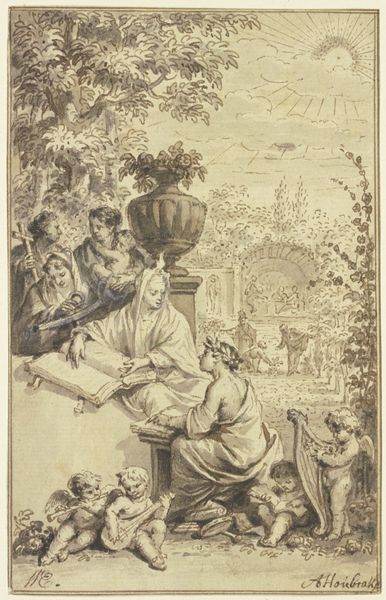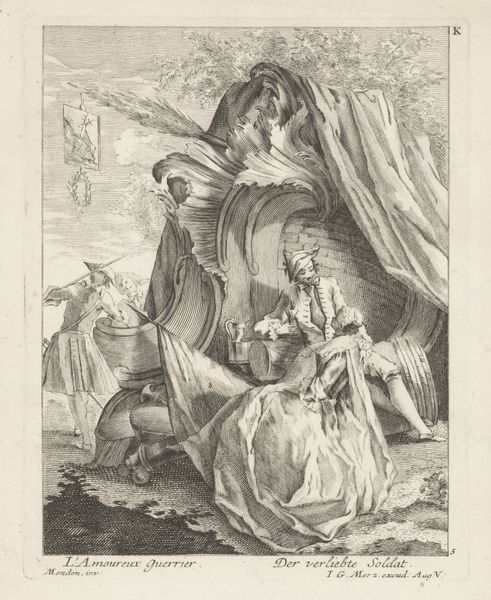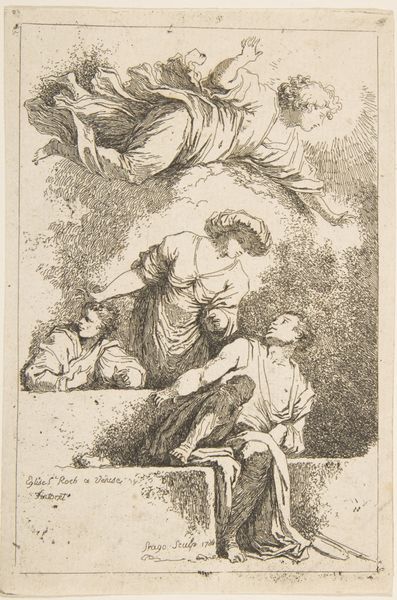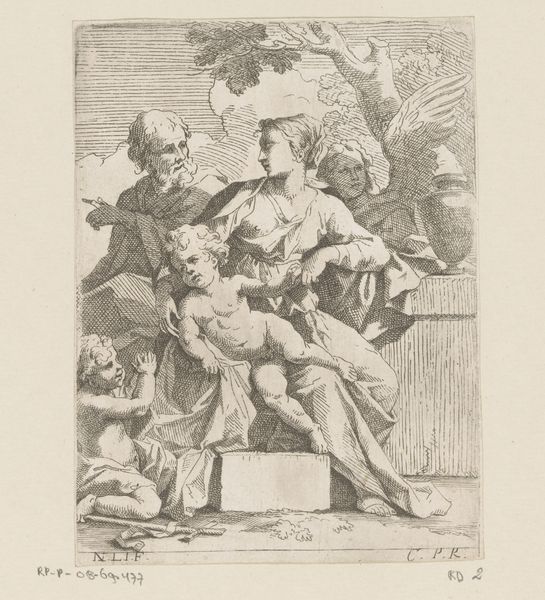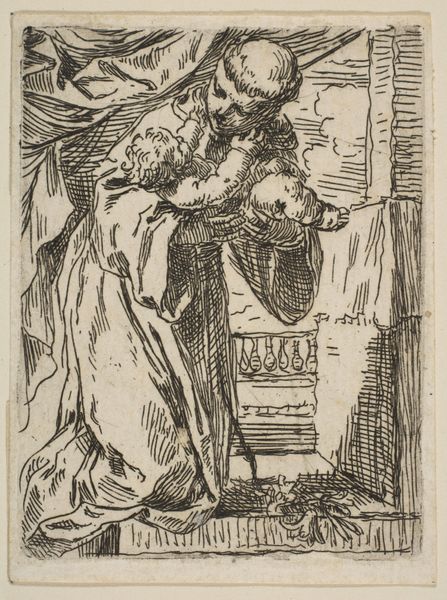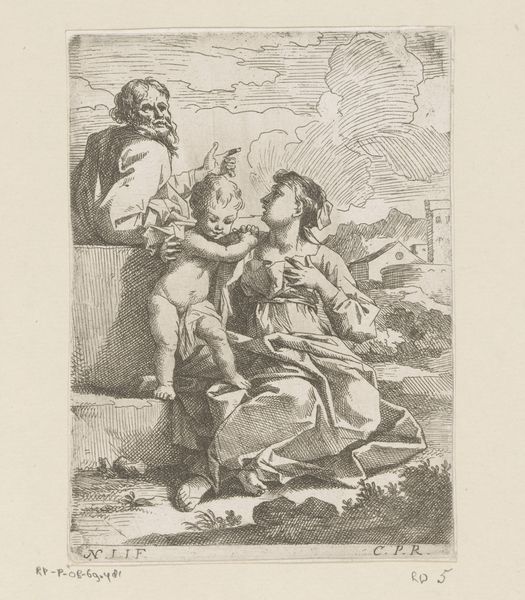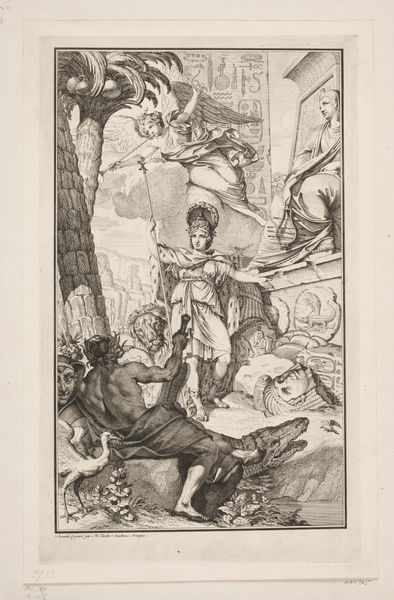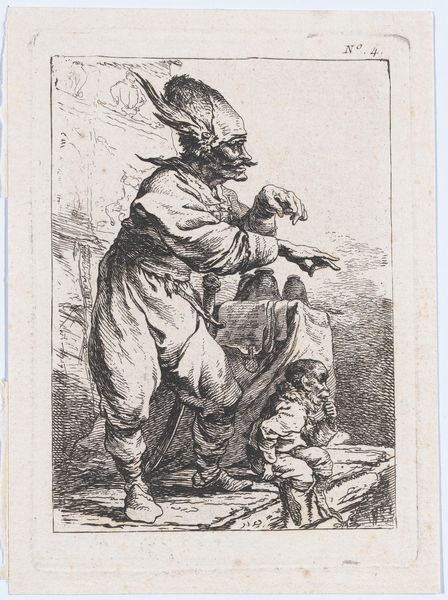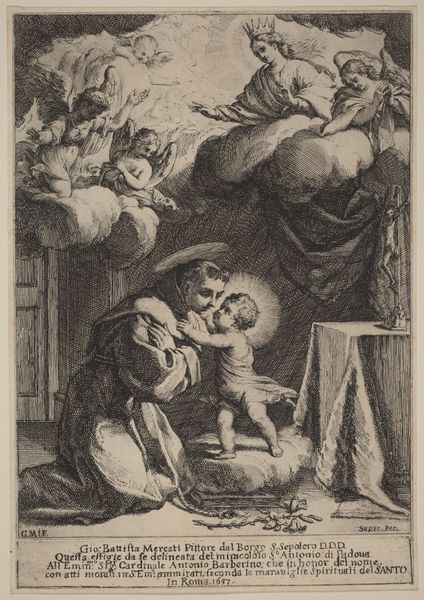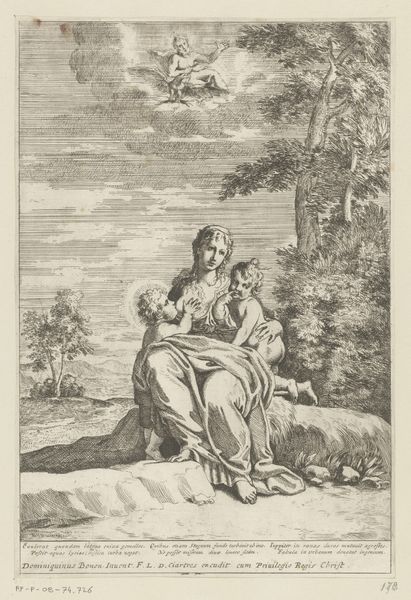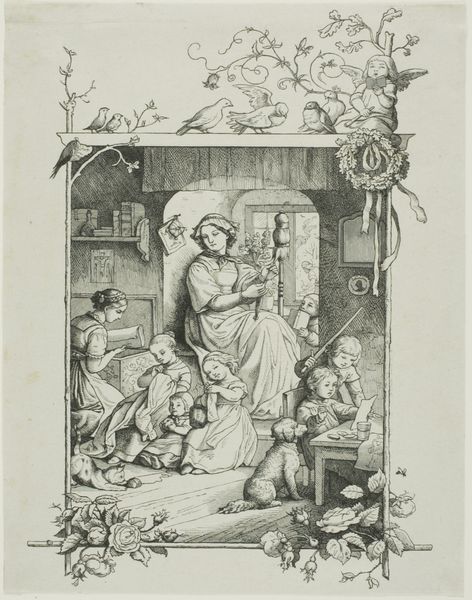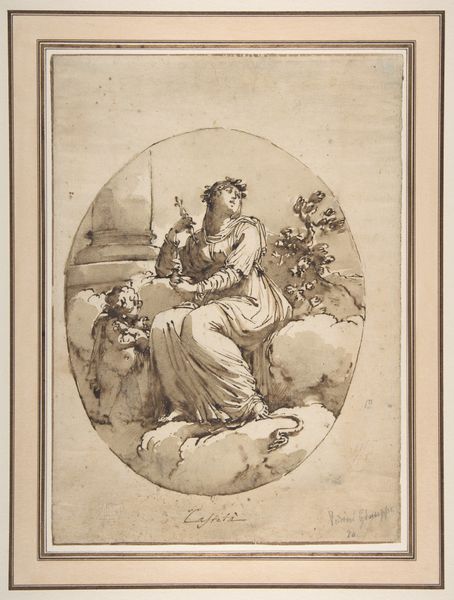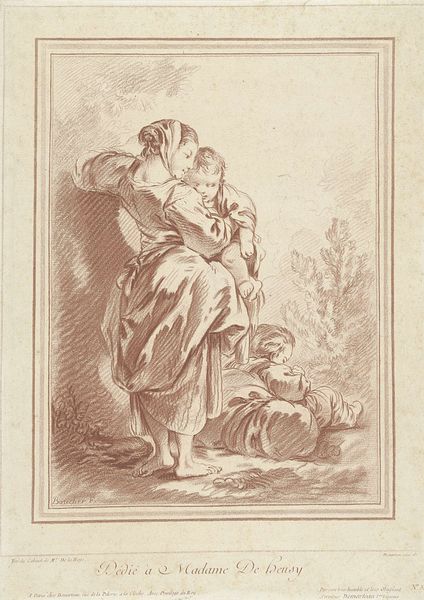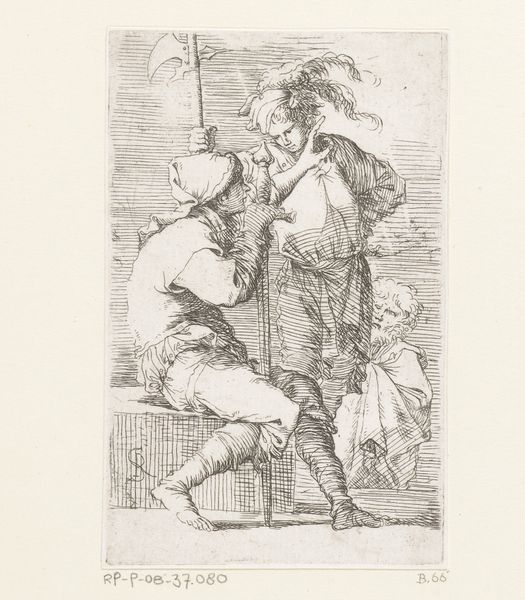
Comedy, from "Fifteen Etchings Dedicated to Sir Joshua Reynolds" 1778
0:00
0:00
drawing, print, etching
#
portrait
#
drawing
#
allegory
# print
#
etching
#
figuration
#
history-painting
Dimensions: Sheet: 11 7/16 x 7 5/16 in. (29 x 18.5 cm)
Copyright: Public Domain
John Hamilton Mortimer etched "Comedy" in 1778, a print now residing at the Metropolitan Museum. Here, we see a woman pointing to caricatures in an open book titled “Nature,” observed by mischievous putti. The book is a symbol of knowledge and inspiration, but its juxtaposition with comical figures reveals a deeper interplay. Consider, the commedia dell'arte, where archetypes like Harlequin mocked societal norms. In this context, laughter becomes a subversive tool, challenging conventions. The image of the book itself echoes throughout history, from illuminated manuscripts to printed texts. The act of pointing has an even deeper resonance, appearing in religious iconography, and Renaissance portraiture. The gesture of the hand directs our gaze, subtly commanding attention and influencing interpretation. In this etching, it not only connects the viewer but also taps into our primal need for narrative and order. The hand, a vehicle of expression, becomes a timeless conduit for the transmission of ideas. These symbols engage viewers on a subconscious level, reflecting our own cultural memory. The cyclical progression of symbols continues, evolving and resurfacing through art history.
Comments
No comments
Be the first to comment and join the conversation on the ultimate creative platform.
